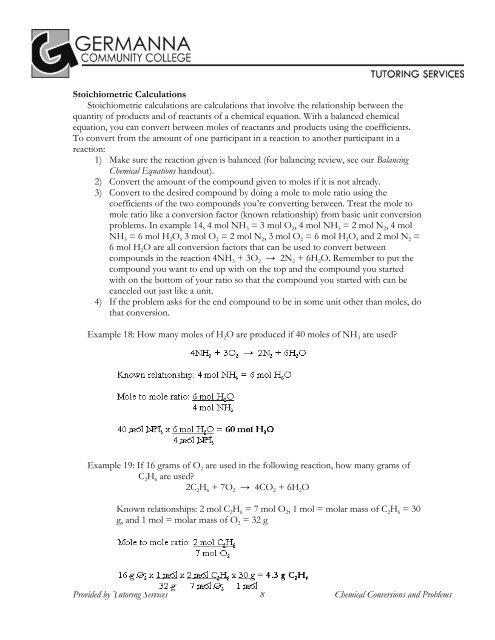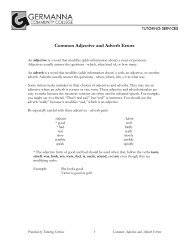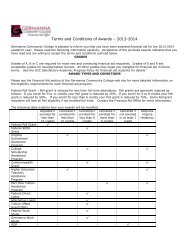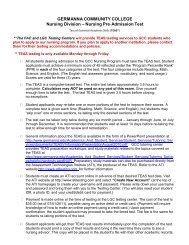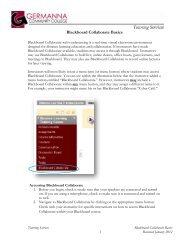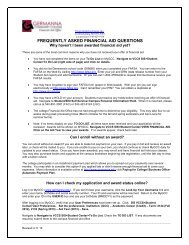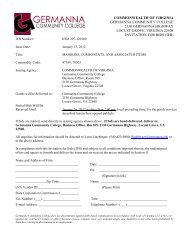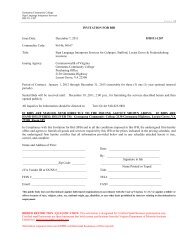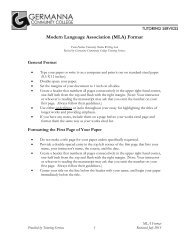Chemical Conversions and Problems - Germanna Community College
Chemical Conversions and Problems - Germanna Community College
Chemical Conversions and Problems - Germanna Community College
Create successful ePaper yourself
Turn your PDF publications into a flip-book with our unique Google optimized e-Paper software.
Stoichiometric Calculations<br />
Stoichiometric calculations are calculations that involve the relationship between the<br />
quantity of products <strong>and</strong> of reactants of a chemical equation. With a balanced chemical<br />
equation, you can convert between moles of reactants <strong>and</strong> products using the coefficients.<br />
To convert from the amount of one participant in a reaction to another participant in a<br />
reaction:<br />
1) Make sure the reaction given is balanced (for balancing review, see our Balancing<br />
<strong>Chemical</strong> Equations h<strong>and</strong>out).<br />
2) Convert the amount of the compound given to moles if it is not already.<br />
3) Convert to the desired compound by doing a mole to mole ratio using the<br />
coefficients of the two compounds you’re converting between. Treat the mole to<br />
mole ratio like a conversion factor (known relationship) from basic unit conversion<br />
problems. In example 14, 4 mol NH 3 = 3 mol O 2 , 4 mol NH 3 = 2 mol N 2 , 4 mol<br />
NH 3 = 6 mol H 2 O, 3 mol O 2 = 2 mol N 2 , 3 mol O 2 = 6 mol H 2 O, <strong>and</strong> 2 mol N 2 =<br />
6 mol H 2 O are all conversion factors that can be used to convert between<br />
compounds in the reaction 4NH 3 + 3O 2 → 2N 2 + 6H 2 O. Remember to put the<br />
compound you want to end up with on the top <strong>and</strong> the compound you started<br />
with on the bottom of your ratio so that the compound you started with can be<br />
canceled out just like a unit.<br />
4) If the problem asks for the end compound to be in some unit other than moles, do<br />
that conversion.<br />
Example 18: How many moles of H 2 O are produced if 40 moles of NH 3 are used?<br />
Example 19: If 16 grams of O 2 are used in the following reaction, how many grams of<br />
C 2 H 6 are used?<br />
2C 2 H 6 + 7O 2 → 4CO 2 + 6H 2 O<br />
Known relationships: 2 mol C 2 H 6 = 7 mol O 2 , 1 mol = molar mass of C 2 H 6 = 30<br />
g, <strong>and</strong> 1 mol = molar mass of O 2 = 32 g<br />
Provided by Tutoring Services 8 <strong>Chemical</strong> <strong>Conversions</strong> <strong>and</strong> <strong>Problems</strong>


